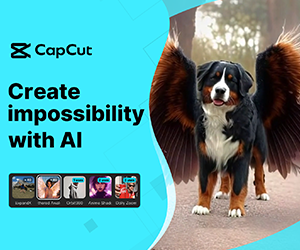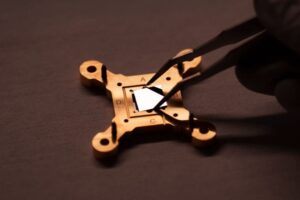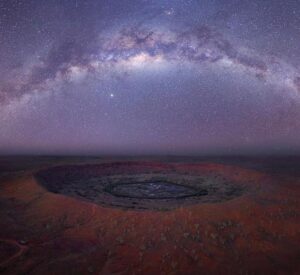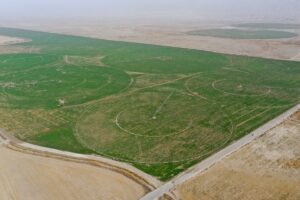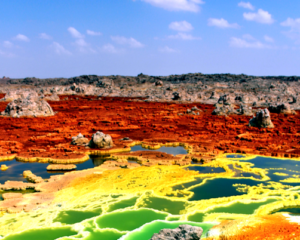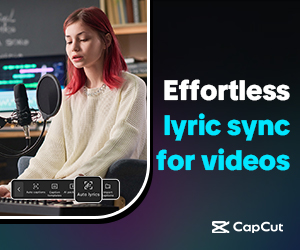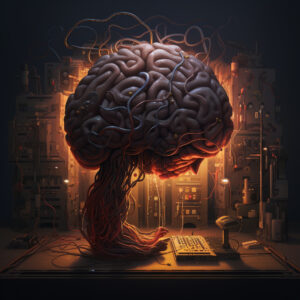In a world rapidly morphing with the advent of artificial intelligence, OpenAI has once again pushed the boundaries with its new offering: Sora. Sora is an AI video tool, shrouded in the cloak of the latest technological advancement. As a narrative unfolds, we’ll explore the intricate facets of Sora and dissect who holds the key to this incredible tool.
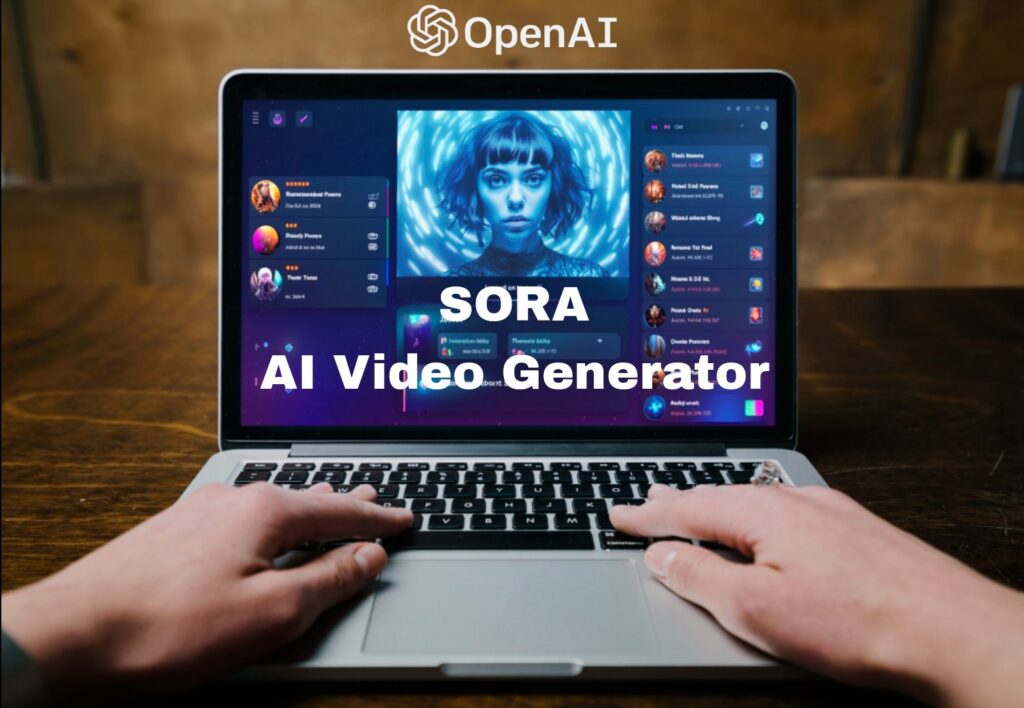 Pin
Pin Table of Contents
Sora Remains an Enigmatic Presence at the Frontier of AI video Tools
In the bustling Silicon Valley, where the air is electric with innovation, OpenAI’s lab is abuzz. Behind secured doors, technologists worked tirelessly, coding and testing to give birth to Sora. Rumored to be a tool that could revolutionize content creation, Sora was the word on every tech enthusiast’s lips, a whisper that carried through the forums and blogs.
As Sora came into the limelight, people clamored to understand its capabilities. Unlike the static nature of its textual predecessors, Sora was designed to manipulate and generate video content with an almost human touch. Its algorithms, enriched by GPT-4’s extensive understanding of context and detail, allowed creators to craft videos from simple descriptions, mirroring the unparalleled power of the human imagination.
Now, imagine the potential of such a tool in the hands of filmmakers, educators, marketers—the possibilities were truly endless. But with great power came great exclusivity. The question on everyone’s mind: who could access Sora?
OpenAI has always maintained a chess grandmaster’s foresight, especially concerning the reach of its technologies. With Sora, it was no different. Access was initially rolled out on an invite-only basis, a nod to caution as much as it was to elitism. Industry professionals, with years tucked under their belts, and organizations driving forward the engine of progress, received first dibs. This careful selection ensured a controlled environment where Sora’s impact could be monitored and guided.
But whispers of a wider release tickled the public’s curiosity. The plan, as unveiled by OpenAI, proposed a staggered approach to Sora’s accessibility. Researchers, academic institutions, and eventually, the broader public would gain entry. The blueprint for this rollout was not just strategic but also ethical, ensuring that as Sora learned from its interactions, any potential for misuse could be curbed, reshaping the tool into a safer iteration before it reached the masses.
As this narrative closes, Sora remains an enigmatic presence at the frontier of AI video tools.
It’s a beacon of potential for the future of content creation, yet a guarded citadel, accessible for now to a select few deemed ready to wield its transformative might. Eyes will certainly stay rooted on Sora as it evolves and becomes a more integral part of our digital storytelling toolkit. For now, though, it is OpenAI’s closely watched protege, a powerful force cloaked in potential, revealing its secrets to the world bit by bit.
Exploring the Horizon of AI: The Revolutionary Promise of Sora, the Hypothetical AI Diffusion Model with Transformer Architecture
“Sora” appears to be a hypothetical AI diffusion model with a transformer architecture, a type of neural network design. Transformer architectures, like the one powering ChatGPT, have revolutionized the field of machine learning by enabling models to handle sequential data, such as text or time-series information, with remarkable effectiveness.
The term “diffusion model” in the context of AI typically refers to a kind of generative model that can learn to produce complex distributions of data. It starts by learning how to gradually add noise to data until it reaches a ‘diffused’ state where the original data is no longer recognizable. The model then learns the reverse process—how to start with the noise and slowly refine it back into coherent data. These models have made significant impacts in the realms of image and audio generation.
With the backdrop of this understanding, when we talk about Sora as a diffusion model with a transformer architecture, we’re looking at a potentially groundbreaking generative AI model that combines the sequential processing power of transformers with the generative capabilities of diffusion models. The implication is that Sora might be able to generate sequential data like videos, which require both understanding of the temporal progression and the generation of complex, high-dimensional data at each time step.
Despite the enthusiasm of the AI community, the creators, hypothetically OpenAI in this case, have not provided a definitive release date for Sora. The anticipation among users and developers is a familiar pattern seen with the release of precedent-setting technologies—there’s a balance between excitement for the innovation and the necessary caution required to ensure the technology is safe and responsible before wide-scale deployment.
The silence from OpenAI could be attributed to several reasons. Firstly, the complexity of safely releasing such a powerful tool to the public is non-trivial. With technology capable of generating videos, considerations around misinformation, digital forgery, and ethical use are paramount. The organization would need to implement robust safeguards to prevent misuse.
Extensive testing phases are required, not just to fine-tune the model’s performance and accuracy, but also to develop appropriate usage policies and possibly to engage with stakeholders such as policymakers, ethicists, and legal experts to anticipate and plan for the broad implications of such technology.
As to why “the launch of the video generator to the general public might not be for some time yet,” these reasons are likely at the core. OpenAI likely aims to responsibly navigate the potential risks while continuing to push the envelope of what AI can do, as indicated by their intention to show what’s “on the horizon” for AI.
Knowledge of Sora is sparse, and the details available suggest it may redefine the boundaries of creative AI applications. However, the veil of secrecy and the gravity of the potential impacts of such technology dictate a cautious approach to its rollout. Users and tech enthusiasts will be eagerly watching for any official updates from OpenAI, awaiting the chance to see first-hand what the next evolution of AI may bring.
Sora: An Exclusive Preview
At present, access to Sora is tightly restricted. Security experts are rigorously scrutinizing it, probing for vulnerabilities and preparing it for a secure public launch. Their task is to identify and mitigate “critical risks” that could arise from its deployment. Such risks might include issues of privacy, potential for misuse, or unintended consequences that could stem from its advanced capabilities.
Simultaneously, a handpicked set of creatives is granted access to Sora. This group of visual artists, filmmakers, and designers represents a diverse industry spectrum, engaging with the AI to explore its creative potential. This selective access serves a dual purpose: it not only allows these creatives to push the boundaries of their work using cutting-edge AI but also provides OpenAI with valuable feedback on Sora’s usability and functionality in real-world scenarios.
Although specific names of those involved in the testing phase haven’t been revealed, this step signifies the beginning of Sora’s introduction to the realm of creativity and design.
Hints about wider access have emerged on the OpenAI forum, where some users point to the development of a waiting list. Such a list represents a common approach to rolling out new technology, allowing interested parties to queue for access. It’s a means to manage demand and continue to collect feedback iteratively from a broader yet still controlled user base.
However, OpenAI remains tight-lipped about the timeline for such a waiting list or the broader rollout of Sora. The absence of a concrete timeline underscores the complexity and care being taken in Sora’s development and deployment. OpenAI seems to be focused on ensuring that by the time Sora becomes publicly available, it has been thoroughly tested and deemed safe for various user interactions.
In anticipation, creatives and technologists alike are keenly awaiting the moment they can sign up to explore what Sora has to offer. Its potential to revolutionize creative workflows is vast, promising to empower artists and designers with tools to both expedite their work and inspire new forms of expression. Thus, the release of Sora stands not just as the launch of a new product but as a potential inflection point in the evolution of AI-assisted creativity.
Building Excitement and Cautious Planning: The Undisclosed Launch of OpenAI's Advanced AI Model, Sora
Anticipation for the release of the advanced AI model known as Sora has been building up, especially after the recent buzz surrounding the official announcement by OpenAI. As per the current information available, OpenAI has not provided a concrete release date for public access. The absence of even a tentative timeline is atypical for an announcement of such magnitude, leaving many to ponder about the possible reasons behind this decision.
A key factor in withholding a release date could be OpenAI’s commitment to ethical and secure AI development. Given the possible capabilities of Sora, integrating diffusion models with transformer architecture, the impacts on digital content creation could be profound. The potential risks include generating misinformation, creating convincing digital forgeries, and the need to establish guidelines for ethical use. These concerns necessitate comprehensive measures to ensure that the model is safe for widespread usage.
OpenAI might be prioritizing extensive testing and the implementation of robust safeguards before considering a public rollout. The intricate processes involved in verifying the security and reliability of such a powerful model mean that a significant amount of time can be dedicated to pre-release activities, including closed beta testing, consultations with stakeholders, and adjustments based on feedback from these initial phases.
The announcement’s emphasis on sharing research ‘early’ implies an openness to community involvement in the developmental stages, which might aid in refining the model further before its release. Moreover, the rapid advancements in the AI industry could be a double-edged sword. On one hand, they promise swift progress and potential readiness for sooner-than-expected deployment. On the other hand, they could also result in unforeseen challenges that require additional time to address.
In considering the launch date of Sora, one must also account for the dynamic nature of AI development. With the industry evolving rapidly, OpenAI might be evaluating ongoing developments that could influence the final form of Sora or its deployment strategy.
Given these considerations, the release timeline for Sora is uncertain, and any projection would be speculative. Stakeholders and enthusiasts are left in a state of watchful anticipation. OpenAI’s cautious approach, while possibly frustrating for those eager to explore Sora’s capabilities, underscores the responsibility that comes with releasing such impactful technologies to the public. In this context, a ‘late’ release that ensures the responsible use of AI is preferable to an ‘early’ release that fails to meet these critical standards.
Balancing Innovation and Responsibility: OpenAI's Prudent Approach to the Ethically Complex 'Sora' Project
OpenAI—known for its innovations in AI—is navigating complex terrain with its anticipated Sora project. Unlike its predecessors, Sora has capabilities that potentially extend AI’s reach into video generation, a domain that is ripe with ethical and safety considerations, particularly in a politically charged climate such as an election year. The nature of Sora’s technology, which may allow for the creation of highly realistic and convincing videos, raises concerns on several fronts.
The reluctance to release Sora hinges on rigorous safety evaluations. Video content has a significant impact on public opinion and behavior, a fact that OpenAI seems to be acutely aware of. The potential for misuse is considerable: nefarious actors could employ such tools to create deepfakes to spread misinformation, manipulate elections, or propagate hate speech.
As a preemptive measure, OpenAI is undertaking “red teaming” exercises. Here, experts in fields prone to abuse by AI, like misinformation and bias, adversarially test Sora to probe for vulnerabilities. The goal is to identify and mitigate possible routes for exploitation before Sora is integrated into any of OpenAI’s consumer-facing products.
Concurrent to these efforts, OpenAI is developing an AI video detection classifier. This tool is intended to discern Sora-generated videos, providing a layer of transparency and traceability. This initiative mirrors the actions taken following the release of previous models like ChatGPT. For instance, after ChatGPT’s launch, OpenAI introduced a text classifier designed to detect AI-generated text—but this was eventually retired due to reliability issues. Analogously, while this video classifier presents a hopeful countermeasure for Sora’s technology, its efficacy will only be confirmed upon extensive testing and real-world application.
Testing AI classifiers is crucial, as evidenced by the issues that arose with ChatGPT’s text classifier. Initial in-house tests appeared promising, but when subjected to external scrutiny, the classifier failed to reliably identify its own AI-generated content. This experience underlined the limitations of such detection tools and the need for caution and continuous improvement.
These steps indicate OpenAI’s commitment to the responsible rollout of its technologies, but they also highlight the considerable hurdles in developing reliable safeguarding tools. In the realm of AI ethics and safety, the balance between innovation and precaution is delicate. OpenAI’s actions suggest that they are keenly aware of the repercussions of haste in the field of creative AI and are choosing a measured approach with the release of Sora—a strategy that may delay its availability but could prove crucial in establishing foundational trust and safety in AI-generated media.
Unveiling 'Sora': A Theoretical Framework for AI-Generated Video through Diffusion and Transformers
The fictional AI model “Sora” seems to integrate diffusion and transformer architecture to create videos. Here’s a detailed exploration of how such a model might work, based on the description:
1. Diffusion Model Foundations:
Diffusion models are a category of generative models that create data by reversing a diffusion process. This process typically starts with data resembling the intended output (e.g., an image) and gradually adds noise until it turns into an unrecognizable random pattern. In the reverse process, the model learns to remove this noise step-by-step to arrive at a coherent, denoised output. In the case of “Sora,” the starting point is a video that looks like static noise. Through numerous iterations, Sora would reduce the noise to reveal a clear and coherent video.
2. Transformer Architecture Integration:
Transformers are a type of neural network particularly adept at handling sequential data. They process inputs and generate outputs through mechanisms like attention, allowing the model to weigh different parts of the input differently. This aspect is crucial for handling the temporal dimension of videos, where understanding the sequence and context is key to generating coherent video frames.
3. DALLE-3 Techniques:
Incorporating elements from DALLE-3, an AI famed for generating images from textual descriptions, suggests Sora can leverage similar capabilities. The recaptioning system in DALLE-3 helps refine generated images to be more in line with the desired output. Applied to video, this could mean Sora has the capability to adjust video frames for better alignment with the input prompts or to improve coherence across frames.
4. Data Representation as Patches: Feeding “Sora” with videos and images as “patches” indicates a technique where visual data is broken into smaller, processable pieces. A patch could be a partial view of an image or video frame. Using patches, the system could focus on details, making the processing of high-resolution data more efficient. By unifying the data representation, “Sora” can be versatile, handling a variety of visual data types, whether they are short clips, long-duration footage, or static images of various sizes and aspect ratios.
5. Training on Diverse Visual Data: Utilizing a range of visual data for training makes “Sora” robust and flexible. It can potentially generate videos that meet a wide array of specifications without being constrained by the limitations that previous models faced. This could mean “Sora” can produce videos with different artistic styles, motions, and narratives, far exceeding traditional generation methods.
While the details given are from a hypothetical standpoint, a real-world model with these capabilities would mark significant progress in generative AI technology. It would also raise important questions on ethical usage, as such tools could be used for both creative pursuits and misleading applications like deepfakes. Therefore, OpenAI’s approach emphasizes caution, underscoring the need for responsible AI development that includes the implementation of safeguards against misuse.
FAQs for "Unlocking Sora: OpenAI's Exclusive AI Video Tool Poised to Reshape Digital Storytelling
Sora is a hypothetical advanced AI video tool from OpenAI, designed to generate and edit videos through sophisticated algorithms, combining diffusion and transformer techniques, similar to what powers GPT models.
Unlike traditional video editing software that relies on manual edits, Sora uses AI to understand and manipulate video content at a granular level, potentially automating complex video production tasks.
Yes, Sora is imagined to have the capability of producing videos from textual descriptions or prompts, much like how DALL·E generates images from text.
While the exact user interface details are not provided, the goal for tools like Sora would likely be to streamline video production, making it accessible to both professionals and amateurs.
Sora is envisioned to generate a wide range of content, from short clips to possibly longer cinematic sequences, varying in artistic styles and narratives.
OpenAI would typically incorporate mechanisms to avoid the generation of copyrighted materials, but users are also responsible for ensuring that their uses of AI-generated content comply with existing laws.
Ethical considerations include the potential for misuse in creating deceptive media, the impacts on the video production industry, and the need for unbiased and fair representations in video content.
Sora is posited to use advanced algorithms to interpret and execute complex video tasks, possibly streamlining processes such as visual effects creation and character animation.
Yes, it’s believed that Sora could also be capable of editing and enhancing existing video material, though the specifics would depend on the tool’s final features.
As Sora is an imagined AI concept, there’s no set release date. If it were in development, release would depend on rigorous testing and ethical considerations.












